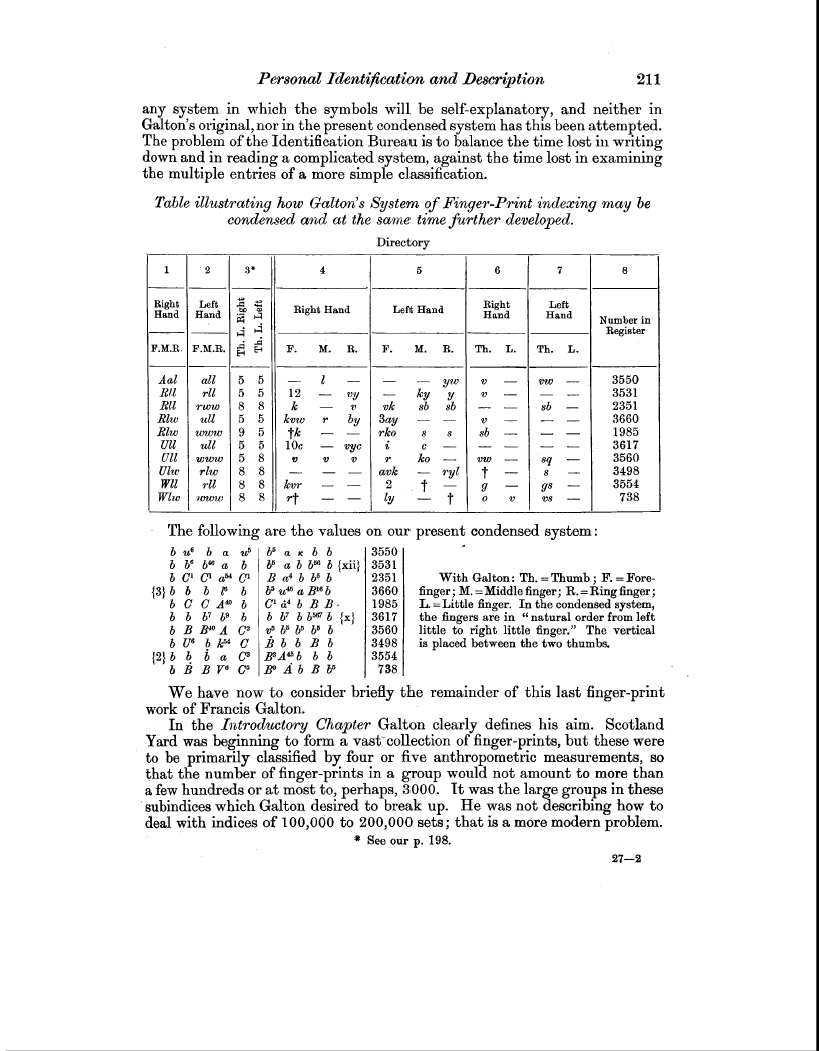| ||||||

OCR Rendition - approximate
Personal Identification and Description 211 any system in which the symbols will be self-explanatory, and neither in Galton's original, nor in the present condensed system has this been attempted. The problem of the Identification Bureau is to balance the time lost in writing down and in reading a complicated system, against the time lost in examining the multiple entries of a more simple classification. Table illustrating how Galton's System of Finger-Print indexing may be
Directory
The following are the values on our present condensed system
Y a K b b b' a b b50 b {xii} Ba4bb'b b' u4' a B" b C'ci46BB. bb'bb"'b{x} v' b' b' b' b v.5 b b B b B'A4b b b b B' A b B 6' 3550 3531 2351 3660 1985 3617 3560 3498 3554 738 With Galton : Th. = Thumb ; F. = Forefinger; M. =Middle finger; R. =Ring finger; L. =Little finger. In the condensed system, the fingers are in "natural order from left little to right little finger." The vertical is placed between the two thumbs. We have now to consider briefly the remainder of this last finger-print work of Francis Galton. In the introductory Chapter Galton clearly defines his aim. Scotland Yard was beginning to form a vast collection of finger-prints, but these were to be primarily classified by four or five anthropometric measurements, so that the number of finger-prints in a group would not amount to more than a few hundreds or at most to, perhaps, 3000. It was the large groups in these subindices which Galton desired to break up. He was not describing how to deal with indices of 100,000 to 200,000 sets; that is a more modern problem. * See our p. 198. 27-2
| |||||||||||||||||||||||||||||||||||||||||||||||||||||||||||||||||||||||||||||||||||||||||||||||||||||||||||||||||||||||||||||||||||||||||||||||||||||||||||||||||||||||||||||||||||||||||||||||||||||||||||||||||||||||||